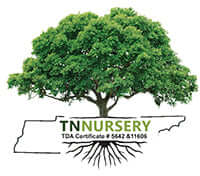
The Therapeutic Benefits of Gardening
Share
Basics 101
Gardening is more than a hobby; it's a form of medicine that can transform the mind, body, and spirit. The physical, cognitive and affective pleasures of gardening have long been studied. With native plants in your garden, these enhancements can be even greater because you will have a closer connection with the natural world, as well as a low-maintenance garden.
A Natural Stress Reliever
We call gardening "nature's therapy", and for good reason. Pruning, planting, watering – all of this plant-scavenging has been demonstrated to decrease cortisol, the body's stress hormone. The repetitive, grounding experience of gardening makes one feel calm and attentive.
Native plants add that little bit of relaxation to the space
They are native to the region, so they take little care, so gardeners can have fun while they're not being swamped with work. If you can imagine a garden where native grasses rustle, wildflowers such as Black-Eyed Susan's pop, or bees hum when they come to native echinacea – there's no better sensory experience for a brain.
Improved Physical Health
The best way to keep fit is with gardening, without the hassle of intense exercises. Diving, lifting, planting: all work major muscles and improve flexibility. You can even reduce your blood pressure and improve your heart health by doing gardening regularly.
Native trees, shrubs, and wildflowers are easy work for your body to do
They are native plants and don't need a lot of management to flourish. Native plants save you on regular replanting or maintenance for older adults or those who can't walk as well.
Mental Health and Emotional Wellbeing
Gardening and better mental health go hand in hand. The time you spend outdoors is also associated with less anxiety and depression. Gardening makes you aware of things as you're attending to the feel of soil, the scent of flowers, and the rhythm of nature.
Native vegetation helps us do that by adding biodiversity. If your garden has milkweed, bee balm, and goldenrod, it will attract butterflies and bees to their nectar, a living habitat that can give you joy and wonder. Being present in such encounters in your garden can be contemplative and energizing, as we are recalled as participants in the greater ecology.
Building Resilience and Purpose
Plant care is therapeutic. Watching seeds become seeds, flowers, and wildlife grow becomes fulfilling. Gardening is also a form of patience because no plant will be successful, but each action is a healthy one.
Native plants embody this resilience. Plants such as the Eastern Red Columbine or Wild Bergamot are built to deal with local pests and weather extremes. They're hardy as the gardener - resilient and persistent for thriving fruit.
Creating a Sensory-Rich Space
An acupuncture garden reaches out to the senses. Soft foliage invites touch, lavender, and mint soothe the mind, and wildflower colors lift the spirit. Add in native plants such as sweet wild sage or vibrant cardinal flowers for a sensory experience that's as nutritious as it is environmentally sustainable.
And the soundtrack of a garden is as critical. Insects call, crickets chatter, and pollinators buzz — they all become part of the orchestra. These sounds are relaxing or meditative.
Social and Community Benefits
The gardening need not be a one-woman show. Gardening for a community or group planting projects builds bonds and creates a common purpose. Planting native species together can also teach others about local environments and biodiversity.
Friends or family working together on a native garden can build bonding as the two move toward an end. Being able to share your garden with other people and be able to show them how beautiful it can be also helps spread the pleasure and healing power of gardening.
A Sustainable Future
If you have a native plant in your garden, it is also therapeutic as well as eco-friendly. Native plants nourish native animals, take less water and restore balance. Planting indigenous species makes gardeners feel pride and accomplishment that their efforts are saving the world.
How to Grow a Healing Native Garden
Steps to Get Started In A Native Garden. Be Light-Scale: Start with a few low-maintenance native plants (coneflowers, native grasses, etc.) You won't feel overwhelmed.
Embrace Pollinators:
Plant things such as milkweed and bee balm for butterflies and bees so you'll have a happy and fun garden.
Sate Your Senses:
Include aromatizing herbs, vibrant flowers, and textures on leaves for an extreme sensory overload.Include Seating Spaces: Place a bench or hammock in a shaded location where you can sit and soak in your garden's serenity.
Mindfulness:
Gardening is a time to take a break, breathe, and connect with the natural world. The garden is an instrument of self-healing and preservation. When you choose native plants, you are creating an ecologically balanced space that benefits local ecosystems as well as your own well-being. Plant for leisure, exercise, or social interaction: a therapeutic garden has unending body-mind-spirit benefits.
